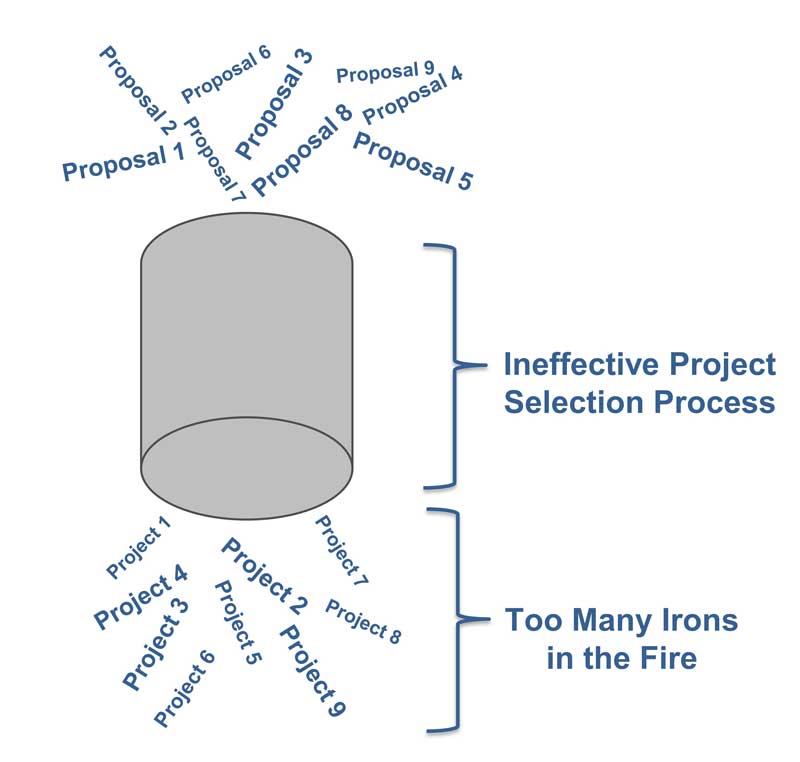Selecting the Right Projects
Choosing which projects to do is difficult and can be affected by all kinds of negative forces, such as—
- Lack of information
- Ad Hoc Decisions
- Indecision
- Squeaky Wheel
- Charisma, Salesmanship
- Politics & Self Interest
- Solution of the Day
- Dominant Player (Intimidation)


This means some of your projects may be of questionable value and may not align with your organization's strategy or needs.
Why does this happen? The answer is ineffective project selection.
Project selection is making a decision about which projects to do—and which not to do. Without an effective project selection process in place, choosing and prioritizing proposals is subject to those negative forces. The result is that many project proposals are accepted regardless of merit because of course, they're all important to someone. We start them all with the hope that things will work themselves out.
On top of having too many projects, there's also no sure way of knowing whether the projects selected are the best projects for the organization. Do these projects advance the goals and objectives of the organization? Do they provide needed capabilities? Or are they simply the next shiny object?
If projects don’t provide needed capabilities or advance the goals of the organization, the results are predictable:
- Projects are not aligned with strategy
- Pet projects bring value to an individual, maybe not so much to the organization
- Portfolios are not cohesive
- Time and money are wasted
And we all know what happens: resources are stretched too thin, schedules are slipped, and budgets are blown. Some projects are canceled, and the ones that are completed fail to deliver the expected results. Too much is spent on projects that shouldn't be done in the first place, and too little on those that should.
The simple truth is that not all projects are created equal. An effective project selection process identifies and prioritizes only the projects that should be done. This process should be—
- Consistent
- Transparent
- Defensible
- Disciplined
- Workable
This kind of effective project selection process will lead to projects that are aligned with the organization’s
- Strategic plan—answers the question, “Should we do it?”
- Capabilities—answers the question, “Can we do it?”
- Priorities—answers the question, “When do we do it?”
By effectively answering these questions, you will improve both your project success rate and the return on your project resource investment.
Let us have the opportunity to discuss with you how our proprietary eCision™ methodology can help your organization select the projects that bring the highest value.
Contact us to schedule a time to discuss our services.

